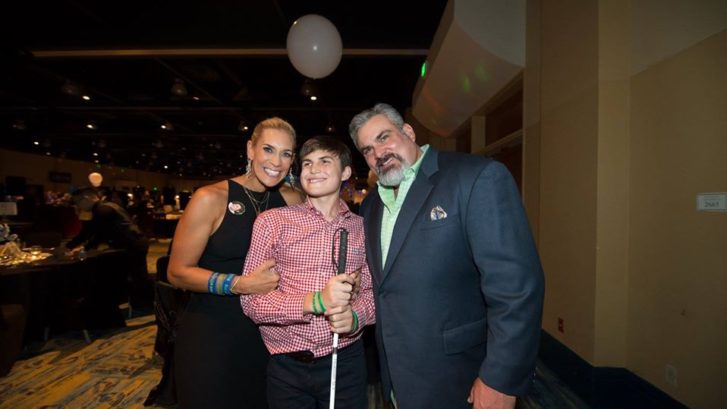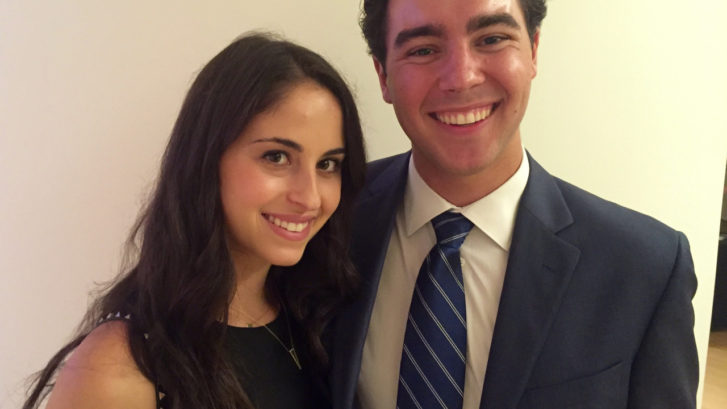For Immediate Release
Contact: Angela Hale
Red Media Group
Beyond Batten Disease Foundation, Noah’s Hope, Hope 4 Bridget and Batten Disease Research and Support Association Partner to Support the World’s Largest and most Comprehensive Batten Patient Registry
Austin, TX (September 12, 2016) — Beyond Batten Disease (BBDF), Noah’s Hope, Hope for Bridget and the Batten Disease Support and Research Association (BDSRA) are joining forces to support the expansion of DEM-CHILD, a novel network of prominent NCL clinician scientists and researchers working together to collect the world’s largest and most well-characterized set of patients with juvenile (CLN3), late infantile (CLN2) and 12 other forms of Batten disease. Funding will support the continued collection of patient data in Germany, Norway, Denmark, France, Argentina, Brazil, Italy, Great Britain, Finland, India and the United States with a special focus on standardization of measurement and widespread use of the Unified Batten Disease Rating Scale (UBDRS). “We are co-funding this effort with committed partners because we believe that good and thorough patient registries that identify all of the major and minor characteristics of a disease, along with family contact information, will be critical to the planning, execution and ultimately the success of any clinical trials for Batten disease,” said Mary Beth Kiser, CEO of the Beyond Batten Disease Foundation. The UBDRS was developed at the University of Rochester Batten Center to quantify the physical, behavioral, seizure and functional aspects of juvenile (CLN3) Batten disease. Jonathan W. Mink, MD PhD, FAAN, FANA, FAAP, Frederick A. Horner, MD Endowed Professor in Pediatric Neurology and president-elect of the Child Neurology Society at the University of Rochester Medical Center, will work with Angela Schulz, MD, principal investigator and coordinator of DEM CHILD at the University Medical Center Hamburg-Eppendorf. Together and with their colleagues, Drs Mink and Schulz will add UBDRS data to DEM CHILD, further align their databases, and collaborate using the larger combined data to establish more rigorous natural history baselines for all forms of Batten disease. In the last few years, Dr Schulz has expanded DEM-CHILD from 7 countries to 18. Combined international patient registry development for control data, natural history documentation and biomarker identification is part of BBDF’s larger strategy to prepare for success in clinical trials. ABOUT BEYOND BATTEN DISEASE FOUNDATION Beyond Batten Disease Foundation (BBDF) is the world’s largest nonprofit organization dedicated to funding research for a treatment and cure for juvenile (CLN3) Batten Disease. Since its inception in 2008, over $16 million has been invested in research by leveraging donations, co-funding and strategic partnerships. BBDF is spearheading a unique, cohesive strategy, incorporating independent scientific resources and collaboration with related organizations to drive research in juvenile Batten Disease. Today there is a treatment in sight. BBDF funded research has discovered a drug that slows the progression of the disease in Batten models. The foundation has launched a 24 month $6 million campaign to advance the treatment to clinical trials. More information can be found at www.beyondbatten.org. ABOUT NOAH’S HOPE-HOPE 4 BRIDGET Noah’s Hope-Hope 4 Bridget, a non-for-profit 501(c)3, was established by the parents of Noah VanHoutan, Laine VanHoutan and Bridget Kennicott, who were diagnosed Late Infantile Batten disease (CLN2) in 2009. After founding individual foundations in 2009, the families partnered in 2014 to strengthen their efforts in research and find a treatment and cure for children impacted by the fatal disease. Noah’s Hope-Hope 4 Bridget also works on awareness of Batten disease. Late Infantile Batten disease affects fewer than 450 children in the United States. Children with Late Infantile Batten disease develop normally through their toddler years, giggling, talking, and running circles around their parents. By age three, they begin to have seizures and gradually lose the ability to walk, talk, and feed themselves. Late Infantile Batten disease is ruthless. Noah passed away in March 2016, just a few weeks shy of his 12th birthday. At this time, Late Infantile Batten disease is fatal between the ages of eight and 12, sometimes longer. For more information, about Noah’s Hope visit:www.NoahsHope.com. For more information about Hope 4 Bridget visit: www.Hope4Brdiget.com ABOUT BATTEN DISEASE SUPPORT AND RESEARCH ASSOCIATION The Batten Disease Support and Research Association (BDSRA) serves those with all 14 identified forms of Batten disease through patient education, family and research conferences, consultation and advocacy. For nearly 30 years, BDSRA’s committed families have funded researchers around the world who have developed the research knowledge leading to today’s clinical trials. For more information: www.bdsra.org.


